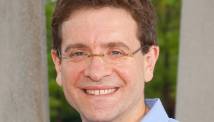MOSCOW: A bitter cold snap in Russia has claimed 123 lives in the past 10 days, an official said Tuesday, with the early freeze testing authorities in a country used to notoriously tough winters.
Temperatures have plunged as low as minus 30 degrees Celsius (minus 22 degrees Fahrenheit) in the Moscow region and minus 60 degrees Celsius (minus 76 degrees Fahrenheit) in Eastern Siberia.
"Since the start of the cold, 123 people have died of exposure and frostbite," a medical source was quoted by the Interfax news agency as saying.
Another 833 people had to be hospitalised to be treated for hypothermia and frostbite, including 123 over the past 24 hours, of whom 14 were children, the source added.
Since the start of the cold snap, 1,745 people were affected, and more than 800 had to be hospitalised, the source said.
State television reports Tuesday focused on the village of Khovu Aksy in Tyva, one of Russia's poorest regions in southern Siberia. A state of emergency was declared there after the local power station failed with temperatures of minus 40 degrees Celsius, hitting 4,000 residents.
With repair work on the power station hampered by the sub-zero conditions, some local people were given shelter at schools that had emergency heating systems.
"There is nothing, not even water, we have to melt snow, and the temperature at home is below zero," one bundled-up resident told Vesti-24 channel.
Some residents, including children, have been lifted by helicopter to the regional centre of Kyzyl, the report said.
Temperatures have been about 12 degrees Celsius lower than seasonal norms in Russia, where the coldest weather usually does not arrive until January or February.
In the Moscow region, Monday saw an all-time record for electricity consumption, Russia's power operator said on Tuesday, blaming the unusually cold temperatures.
But Russia's weather service is predicting a drastic temperature hike in the European parts of Russia later this week, with 0 degrees Celsius expected in Moscow.
The emergency ministry warned however that the warming would be accompanied by strong winds and freezing rain that would likely damage communications and slow down traffic.
In neighbouring Ukraine last week, the cold claimed 83 lives, new data showed.
On Tuesday the health ministry said no new figures would be released until next Friday.
-AFP/ac













